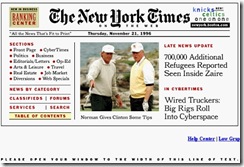One of the weirder developments of recent years has been the personification of consumer brands on social media. At first it was just awkward, but now some brands are doing it really well.
All are working strenuously to develop an 'emotional connection' with their audiences, which is why you can't watch a YouTube clip by a tour operator or fizzy drink company these days without being reduced to tears.
The ones that get it right seem to have cracked the basics of good publishing: Target a community, understand it, and then surprise it with engaging content. Red Bull, which has attracted 42 million likes on Facebook, has its own publishing unit complete with a 2.2 million circulation print magazine, feature film, events, and a growing inventory of good film clips, interviews and stories. Their work is of high quality and they are disciplined - focusing all their efforts on people who like adventure sports.
Another company selling a seemingly commoditised product, Dove, attracted 62 million YouTube views for their superb 'forensic artist' clip. They don't just retail soap any more, they offer self-esteem - and having ploughed that furrow for about a decade now they've earned a certain amount of credibility.
Given the relative ease and affordability of creating, managing and distributing content why wouldn't a brand want to own its relationship with customers rather than relying on third parties to mediate? Media isn't shrinking - it's changing. The future of consumer media lies, in large part, within the burgeoning content divisions of brands themselves.
 It was already clear by the mid-90′s that the then treacle-slow World Wide Web would become the platform of choice for all sorts of content – including news and comment – once it became fast and affordable for ordinary people. If anything the surprise is that in 2014 print still takes such a large share.
It was already clear by the mid-90′s that the then treacle-slow World Wide Web would become the platform of choice for all sorts of content – including news and comment – once it became fast and affordable for ordinary people. If anything the surprise is that in 2014 print still takes such a large share.
